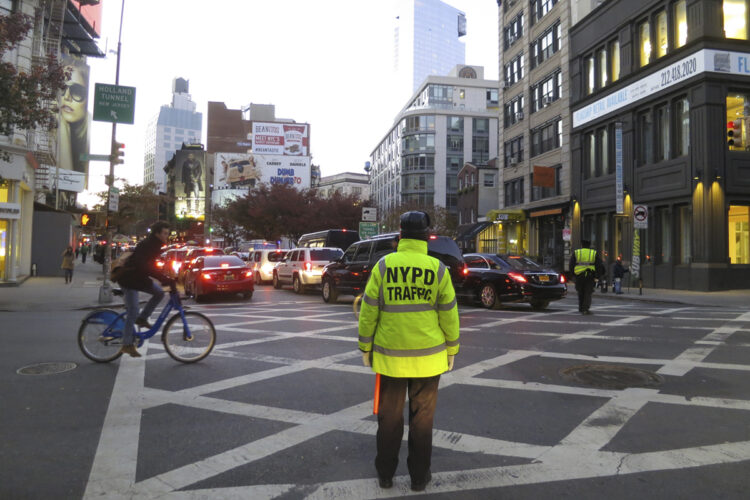
Congestion pricing is new in NYC
Dear EarthTalk: What exactly is congestion pricing as just implemented in New York City and how will it help the environment? Should other cities also adopt this policy?
—H.M., San Diego, CA
Jan. 24. New York City recently became the first U.S. city to implement congestion pricing, a strategy aimed to reduce traffic in extremely congested areas by charging drivers a fee during peak hours. This approach not only helps alleviate traffic but also provides notable environmental benefits.
Background
Congestion pricing seeks to manage demand for road space in busy areas. Drivers pay a fee to enter these zones with electronic tolling systems that track vehicles and collect payments. The revenue generated is usually invested into improving public transportation and infrastructure. For example, New York plans to issue these funds toward improving its subway system, which millions of residents depend on daily.
Air quality
Reducing the number of vehicles on the road improves air quality. Fewer cars mean lower greenhouse gas emissions and less air pollution, major contributors to climate change and public health problems. Cleaner air also means fewer respiratory issues for residents mainly in the areas near major traffic hubs.
Beyond environmental gains, congestion pricing makes cities more tolerable. If traffic congestion decreases, it leads to faster commute times and less stress for drivers. Streets become quieter and more friendly for pedestrians. Walking and biking are encouraged more if streets are convivial. Cities like London have seen a 30 percent reduction in traffic volumes after executing congestion pricing; there have also been crucial improvements in public transit reliability.
Drawbacks
Critics of congestion pricing usually point to worries about fairness. This is generally notable for low-income drivers who may struggle to afford the fees. Small businesses that rely on vehicle deliveries also worry about added costs. However, advocates of congestion pricing argue that the advantages outweigh these challenges. Investments in public transit can make commuting more attainable and affordable for everybody; programs offering discounts or exemptions can help mitigate the impact on vulnerable groups.
Help congestion pricing work
—Reduce your own driving by using public transit, biking or walking when possible.
—Participate in community discussions or campaigns that support congestion pricing.
—Volunteer or donate to groups advocating for sustainable urban planning.
Moreover, you can educate others about the benefits of congestion pricing and how it improves urban life. Support local policies that fund clean energy solutions or improve bike and pedestrian infrastructure. Together, we can create cleaner and less congested urban environments for everyone.
CONTACTS: Better Cities Project: https://better-cities.org; U.S. Department of Transportation Congestion Pricing Resources: https://ops.fhwa.dot.gov/congestionpricing.
EarthTalk® is produced by Roddy Scheer & Doug Moss for the 501(c)3 nonprofit EarthTalk. See more at https://emagazine.com. To donate, visit https://earthtalk.org. Send questions to: question@earthtalk.org.





